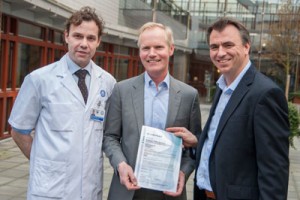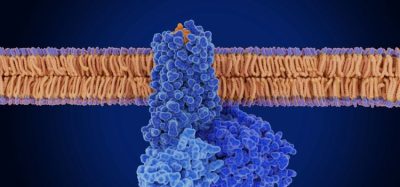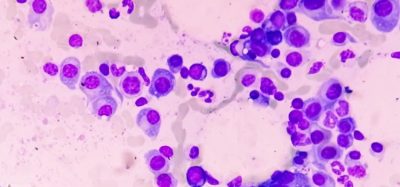UMC Utrecht’s new liver cancer treatment approved for use in Europe
Posted: 14 April 2015 |
A new liver cancer treatment developed by the UMC Utrecht that uses uses radioactive holmium microspheres has received the European CE mark…


A new treatment for liver cancer developed by the University Medical Center (UMC) Utrecht has received the European CE mark for quality and safety.


Maurice van den Bosch, Jan Siger and FrankNijsen with CE certificate
The innovative treatment uses radioactive holmium microspheres to attack liver tumours. It involves injecting radioactive beads into the hepatic artery, which then join the blood flow and become trapped in the tiniest blood vessels, located in and around the liver tumours. They therefore emit their radiation close to the tumour. This type of radiation treatment is also called radioembolization.
The treatment is being marketed by Quirem Medical, a spin-off company of the UMC Utrecht.
“We consider our holmium microspheres as ‘the next generation of microspheres,'” says Dr. Frank Nijsen, founder of Quirem. “Treating liver tumours with yttrium microspheres is already a proven and valued cancer therapy using radioembolization. The new holmium microspheres constitute the next step in the development of this technology. Because they show up on MRI scans and SPECT-CT, these microspheres can be tracked, allowing customized treatment for each individual patient. Now that we have been awarded CE marking, patients all over Europe can benefit.”
UMC Utrecht has been developing the treatment for 15 years
The UMC Utrecht has been working for fifteen years to develop this innovative treatment modality. The spin-off company Quirem Medical was founded in 2013 to make the treatment available to patients outside the UMC Utrecht.
“The CE marking reflects our ambition to make our technology available to people around the world,” Jan Sigger, CEO of Quirem Medical, points out. “We can now work to further develop this holmium treatment together with our clinical partners.”
The research group at UMC Utrecht in charge of the project will work closely with Quirem Medical to adapt the new treatment for treating tumours in other organs as well. This year, research will start on the use of holmium microspheres to treat head and neck tumours. The unique image guidance with MRI introduces possibilities for closely monitoring the localized treatment of tumours and optimizing it as needed.
“I expect great things from this holmium therapy,” says Prof. Maurice van den Bosch, an interventional radiologist at the UMC Utrecht. He was closely involved in the development of this new treatment. “Patients with liver tumours will benefit, and I hope that we will be able to treat patients with other tumours more effectively in the future as well.”
UCM Utrecht have provided a video showing treatment of liver metastases with holmium-166 microspheres.
For more information about UCM Utrecht, please visit www.umcutrecht.nl.








